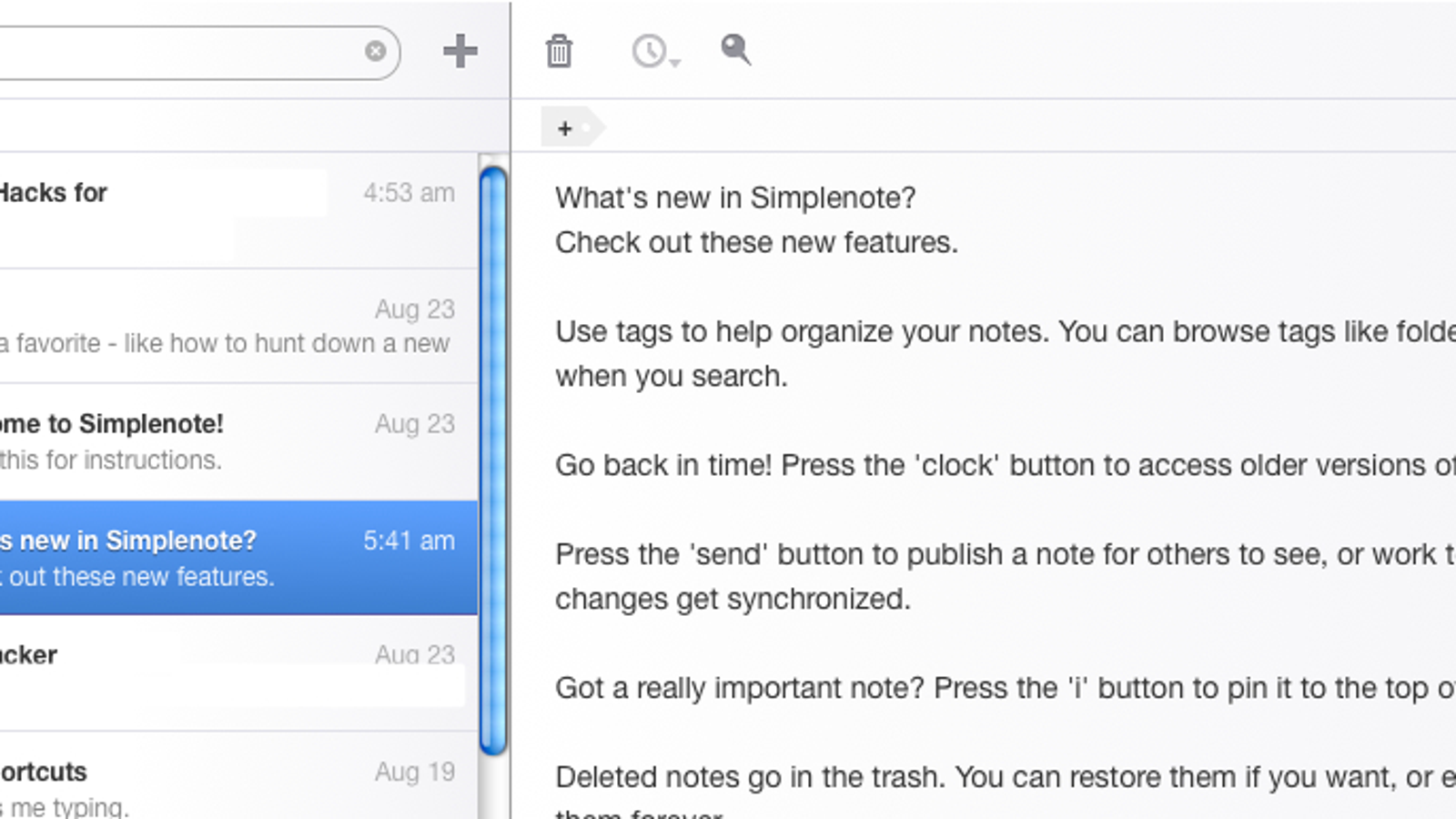

You can add markup to your notes (using, say, Markdown or HTML) but it won’t render in the stock editor. No images, no formatting, no tables, or anything like that. Out of the box, Standard Notes is plain text. Give it a title, optionally add a tag to the note (more on this in a moment), and start typing. Working with NotesĬlick the + icon in the All Notes pane to create a new note. All notes, which lists your notes, with the newest at top.Tags, which lists tags you’ve added to your notes.When you log into Standard Notes, you’ll see three panes:

Let’s say you’ve signed up for a hosted account. That gives you access to a number of extensions beef up Standard Notes. It’s free, although you can get a paid account for $34.99 per year. Which means I registered for the hosted version of Standard Notes. I don’t know about you, but I’m not an uber techie.
SIMPLENOTE NOTES TO TEXT INSTALL
You can also install it on your own server. That means if you have the technical nous, you can grab the building blocks of the application and modify them. And as a plain text note-taking tool, Standard Notes works very well indeed. I’d been meaning to dive into Standard Notes, but time and opportunity never presented themselves.įinally, things aligned in late January, 2018 and I spent the two to three weeks I usually do when working with a new tool or app. Standard Notes was brought to my attention a while back by Mo Bitar, the developer behind it. One of the newer ones on the block is Standard Notes. There are a number of simpler alternatives. The service’s 2016 privacy flip-flop really put into question whether or not you can trust Evernote with your information. Evernote is arguably at the top of the food chain in the kingdom of online note taking apps.Īs some people discover, they don’t need all of Evernote’s bells and whistles. When you think of note taking apps, the first one that comes to mind is probably Evernote. Going Plain Text with Standard Notes The Plain Text Project


 0 kommentar(er)
0 kommentar(er)
